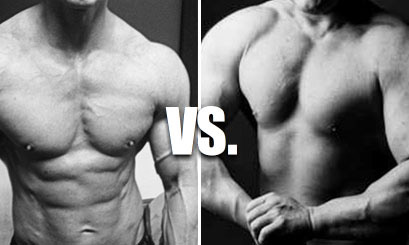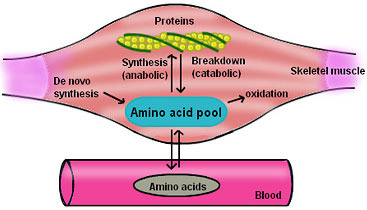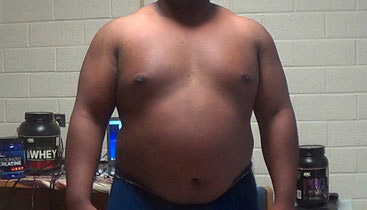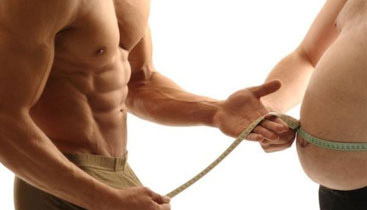CLEAN BULKING VS. DIRTY BULKING: WHICH IS BETTER?

What is the best approach to take when it comes to your mass gaining diet, a “clean bulk” or a “dirty bulk”?
You’ll hear various definitions for these two terms depending on who you speak to, but for the sake of simplicity, here’s how we’ll define them…
First off, as you probably already know, in order to gain muscle you must create a “calorie surplus” by consistently consuming more calories than you burn each day. This provides your body with the extra energy that is needed to synthesize new muscle tissue.
This is accomplished by first finding your calorie maintenance level (which is the number of calories that you require each day in order to maintain your current weight) and then increasing that number by a set figure to ensure that you’re maintaining a calorie surplus over time to support new muscle growth.
“Clean bulking” refers to creating a smaller, more tightly controlled calorie surplus in order to build muscle at a more gradual pace while also minimizing gains in body fat.
“Dirty bulking” refers to creating a larger, more “flexible” calorie surplus in order to build muscle at a faster pace, but with the understanding that greater gains in body fat will also result.
Although not true in every single case, those on a “clean bulk” will also tend to be more deliberate when it comes to tracking their overall calories and macros, while those on a “dirty bulk” will tend to follow a simpler “eat lots and eat often” approach without being as strict about their precise calorie totals or food choices.
So, which is the superior bulking approach, and why?
Clean Bulking Vs. Dirty Bulking: The Superior Approach

When it all comes down it, there is no one definitive answer that will apply in every single situation, and a case could be made for either approach depending on the individual’s goals and preferences.
However, in the vast majority of cases, I would definitely recommend that you aim to stick more to the side of “clean bulking” and focus on increasing your overall body weight at a slower, more gradual pace.
Here are 4 key reasons why maintaining a small to moderate calorie surplus is the superior approach for most people in comparison to a larger and less controlled calorie surplus…
4 Reasons To Clean Bulk Instead Of Dirty Bulk
First off, your body can only build a limited amount of lean muscle tissue in any given day no matter what you do.

The primary mistake that most people who follow a full blown “dirty bulking” approach make is the idea that if a smaller calorie surplus builds a certain amount of muscle, then a larger calorie surplus will automatically build more. It just doesn’t work that way.
There are set limits on how much lean tissue your body can build over a set period of time, and simply stuffing your face with more and more food is not going to magically speed up the process to any significant degree.
Any excess calories that you consume above and beyond what your body can use to maximize its muscle building potential in any given day will simply be stored as fat.
A dirty bulking approach that provides your body with far more calories above and beyond what it can actually divert to lean muscle growth is nothing more than a recipe for pounds of extra fat gain over the long term.
Secondly, a dirty bulk can potentially throw your entire program off course if you aren’t careful.

Many guys who start off on the skinnier side and who simply want to pack on overall size will often say that they “don’t care about gaining excess fat as long as they get bigger”. I remember saying this exact same thing myself when I first got started.
However, I’ve seen it countless times before where a naturally thin guy begins training hard and simply eats a ton of food every day without really tracking anything, and a few short months into his program is shocked (and quite unhappy) with the amount of body fat he’s gained.
He’s now stuck in a predicament. He hasn’t come anywhere close to the level of muscular development he desires, but he’s also carrying around an amount of excess fat that he isn’t comfortable with.
He can continue bulking and gaining muscle, but knows that that means an even further increase in body fat… or he can put the brakes on his entire muscle building phase and go through the tedious process of having to shift into a cutting phase to strip off the excess fat he’s gained.
Trust me, this is not a situation you want to be in. Regardless of what you might think right now, nobody wants to get fat, and the only way to steer clear of this is to bulk up at a gradual pace so that body fat gains are kept at a minimum and you can place all of your focus on making continue muscle gains.
Third, dieting for fat loss is ultimately a tedious process, and it almost always ends up taking longer than you think to reach your desired level of leanness.

Let’s face it, cutting is no fun. It requires you to track your calories and macronutrients with more precision… you’ll feel hungry and have less energy than you’re used to… it will usually involve additional cardio sessions throughout the week… and just like gaining muscle, fat loss is also a slow and gradual process as well.
Always remember this during your bulking phase: for every 1-2 pounds of additional body fat that you gain, that’s roughly one full week of dieting and cardio that you’ll have to endure later on if you want to burn it off. And if your goal is to retain as much lean muscle during your cut as possible (which would obviously be the case for nearly everyone reading this), it would probably be closer to the lower end of about 1 pound of fat lost per week.
Go full on “dirty bulk” mode and gain, say, an additional 15 pounds of fat, and that could mean 4 full months or so of cutting to get back to a reasonable body fat percentage.
Fourth, you’ll generally just feel better overall when following a clean bulking approach.

Stuffing your face with huge amounts of calories every day and eating when you aren’t even hungry is a great way to keep yourself feeling bloated and sluggish throughout the day… not to mention that if you’ve decided that dirty bulking is the way to go for you, you’re probably not doing much in the way of cardio either.
A clean bulking diet that involves a smaller calorie surplus and a couple cardio sessions throughout the week will generally just leave you feeling physically and psychologically better overall. This is obviously a good thing in and of itself, and it also has positive implications for your overall muscle building program as a whole.
For these 4 reasons, I definitely believe that most people will be best off to approach their bulking phase using a slower, more gradual approach, and to focus on building muscle size and strength while keeping body fat gains to a minimum.
How To Structure Your Clean Bulking Diet

You’ll find various figures thrown around on this, but I think a safe calorie surplus range to shoot for is about 15% above your calorie maintenance level. This amount is large enough to allow you to build new muscle at or near your maximum potential, but is small enough that fat gains will be kept under control.
If you want to be particularly cautious and do everything possible to prevent excess fat gain, you can start off even lower than this at 10% or even as low as 5%, and then gradually taper up until you’re gaining around half a pound of body weight per week, which is a good pace for most average beginners looking to carry out a successful lean bulking phase.
If you want an easy way to determine a 15% calorie surplus for yourself along with an exact breakdown of daily protein, carbohydrates and fats, you can use my free bodybuilding macronutrient calculator which fully automates the process for you.
Now, to close this post out I should mention that, as I said earlier, there are always exceptions and there isn’t one single definitive answer that will apply to every person. With that in mind, let me quickly make a case for when a “dirty bulk” would make sense…
When Does Dirty Bulking Make Sense?

When it all comes down to it, the main advantage of a dirty bulk is that it doesn’t really require you to track your diet with a significant level of precision.
You can simply eat a lot of food, and eat often, and know that you’re receiving all of the protein, carbohydrates and fats that you need to max out your body’s muscle building potential.
So, if the risk of putting on a relatively high amount of extra body fat is something that truly doesn’t bother you, and the benefit of being able to eat more food and not having to track your diet closely outweighs the hassle of having to diet for a longer period later on, then a dirty bulk could make sense for you.
This is especially true for those with above average muscle building and fat burning genetics, as there are some people who can basically eat whatever they want, gain muscle at a significant rate, and not even put on much if any fat in the process.
However, this only represents a small minority of the population, and most people who take this type of approach probably won’t get the results they’re truly after.
Final Word On Clean Bulking Vs. Dirty Bulking

In the end it ultimately comes down to your individual preference, and you’ll simply have to weigh out the benefits and drawbacks of each approach and then decide for yourself.
However, for most people in most cases, I definitely believe that a clean bulking diet is going to be the superior approach.
A clean bulk can still take you very close to your maximum muscle building potential while at the same time preventing you from getting excessively fat, reducing the need for strict fat loss dieting later on, and leaving you feeling physically and mentally healthier overall.
Keep in mind that you’re always going to experience an increase in body fat any time you carry out a bulking phase regardless of whether you take the “clean” or “dirty” approach, but that doesn’t mean that you need to blatantly get fat in the process.
If you found this article helpful, make sure to sign up for your FREE custom fitness plan below...




